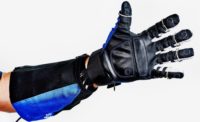ADELPHI, MD — U.S. Army researchers have discovered a way to monitor the performance of 3D printed parts, which tend to have imperfections that affect performance in ways traditionally-machined parts do not. In the paper, "In-Situ Fatigue Monitoring Investigation of Additively Manufactured Maraging Steel, Army researchers verifit that they can detect and monitor the wear and tear of 3D printed steel through sensor measurement. For the Army, these types of measurements help soldiers maintain readiness because these indicators help predict when parts will degrade or fail, and need replacement.
"3D-printed parts display certain attributes, due to the manufacturing process itself, which, unchecked, may cause these parts to degrade in manners not observed in traditionally-machined parts," says Dr. Jaret C. Riddick, director of the vehicle technology directorate at the U.S. Army's Combat Capabilities Development Command's Army Research Laboratory. "Because of this, it's commonly understood that the use of these parts, in current cases, is meant to be a stop-gap to fill a critical need just as we have seen with 3D printing during the COVID-19 response."
He says the laboratory's study points to scientific discovery that ensures readiness in increasingly contested environments where the immediate need for replacement parts places constraints on the time it takes to deliver them from far away. In these cases, soldiers would opt for a stop-gap to continue the mission rather than having to abort the mission.
This project was led by a team of researchers from the laboratory, the National Institute of Standards and Technology, CCDC Aviation and Missile Center and Johns Hopkins University, who likened cues from the material's performance to a vehicle odometer reading that signals a need for an oil change.
US Army Discovers a Way to Monitor Performance of 3D-Printed Parts



